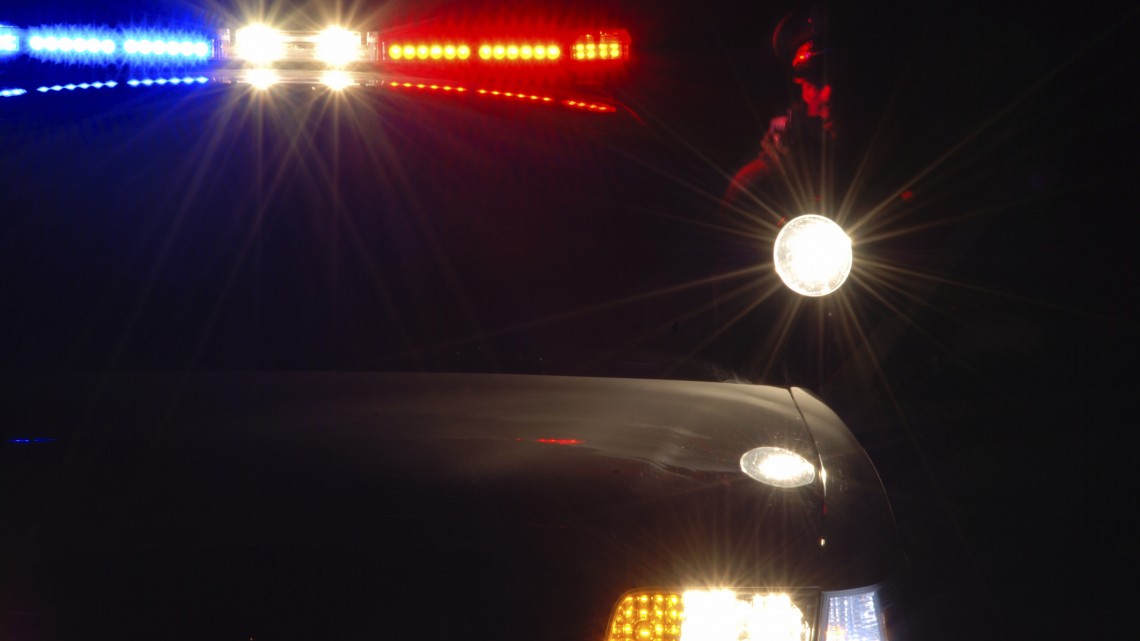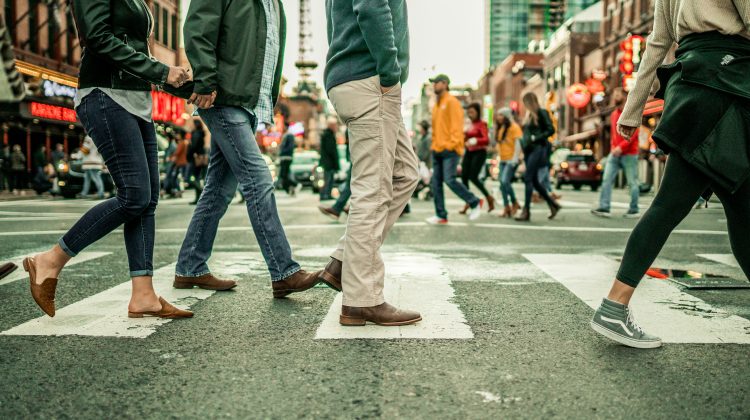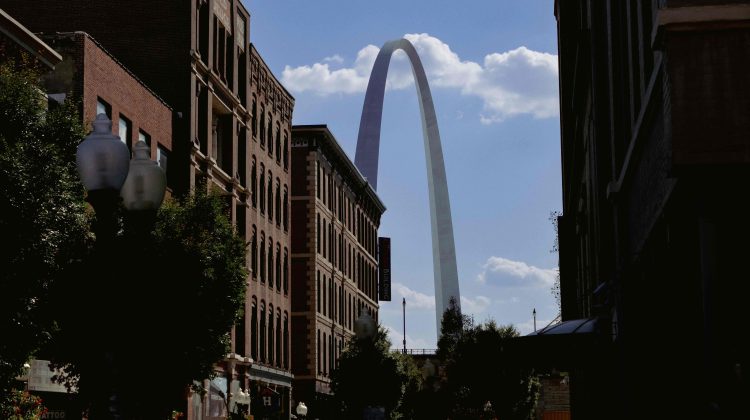The CDC recently reported that nearly 30 people die every day in the United States because of drunk-driving related crashes. One of the methods law enforcement uses to curb this issue is by setting up mandatory sobriety checkpoints in locations with high rates of drunk drivers. While the need to stop drunk driving is essential, sobriety checkpoints have become a hot topic in the media with some believing they are against our constitutional rights. In an attempt to showcase both sides of the debate, we’ve put together a roundup of seven experts to share their thoughts on this controversial topic. These experts include police officers, defense attorneys, and representatives from some of the nation’s largest safety organizations.
George H. Ramos, Jr. @GeorgeRamosLaw / San Diego DUI Attorney
Candace Lightner @Voice4Safety / Founder of WeSaveLives.org
Warren Redlich @WR4NYGOV / Creator of “Fair DUI” flyer
Stephanie D. Shaw (NTSB) @NTSB / Safety Advocate for National Transportation Safety Board
Ralph Blackman @goFAAR / Foundation for Advancing Alcohol Responsibility
Harold Wallin @HaroldWallin / The Illinois DUI Lawyer
Mark McCullough @SanDiegoPD / San Diego Police Officer
1.) In your opinion, are sobriety checkpoints unconstitutional?
Lightner: They are constitutional by federal standards and since drivers can avoid the checkpoints by simply checking their location (many sites post this information) a driver isn’t forced to go through the checkpoint. Also, we have to submit ourselves to airport scrutiny to protect us from airplane terrorist related activities and I consider impaired driving a bigger national threat than airplane hijackings and explosions.
Redlich: In my opinion they are not. The Fourth Amendment prohibits unreasonable search and seizure without probable cause. Checkpoints (and not just sobriety checkpoints) involve seizure without probable cause or even the lesser “reasonable suspicion.”
However, the Supreme Court has rules that they are constitutional, effectively making a loophole in the Fourth Amendment.
Ramos: They are constitutional, because the United States has ruled so in Michigan Dep’t of State Police v Sitz, 496 U.S. 444 (1990). However, certain guidelines must be followed by law enforcement agencies to ensure the checkpoint’s constitutionality. If they are not adhered to, that gives rise to potential 4th Amendment violations.
Blackman: As the CEO of an organization that works to eliminate drunk driving and underage drinking, I have to look at the effectiveness of sobriety checkpoints as a tactic for reducing & ending drunk driving. I’ll leave the constitutionality of this debate to the state courts. The fact is, sobriety checkpoints and other high-visibility enforcement efforts have been shown to reduce drunk driving in some instances. That said, there are certainly other tactics that can have a greater impact. States need to focus on reducing repeat offenders and high-BAC drivers – a segment of drunk drivers known as Hardcore Drunk Drivers that is responsible for the vast majority of drunk driving crashes and fatalities in every state and across the nation. To do that, states need to assess individuals for alcohol-dependency issues, make ignition interlocks mandatory for all DUI offenders, and make sure they receive individualized treatment so they don’t reoffend.
Wallin: I think they are unconstitutional, because they are police stops without warrants or probable cause, as required by the U.S. Constitution. However, the U.S. Supreme Court disagrees with me and has held that so long as certain protections are met, they are constitutional.
McCullough: DUI Checkpoints are constitutional as driving is a privilege not a right, we sometimes forget that. The job we do at DUI Checkpoints does nothing more than make the roads safer for the public. We don’t track folks by their license plate numbers or document those that go through other than the ones we evaluate for DUI. Our policy we don’t even check the licenses of the drivers unless we have you step from the car for a further DUI evaluation.
2.) Do you believe sobriety checkpoints are successful in deterring people from driving while under the influence?
Lightner: Yes, I do since Jim Fell said so! I am not sure if their is conclusive data on the effectiveness of checkpoints but common sense does seem to indicate that fewer people will drink and drive if they think they might get stopped on the way home.
Redlich: No. First of all deterrence is not the purpose for which the Supreme Court allowed checkpoints. It was for making arrests.
Checkpoints are publicity stunts designed to satisfy the MADD special interest and create a media spectacle to give the impression that law enforcement is doing something about crime. Routine patrols are far more effective at dealing with crime.
Shaw: The NTSB has long recommended and supported sobriety checkpoints as an effective countermeasure for preventing impaired driving.
Most recently, in its 2013 Safety Report, Reaching Zero: Actions to Eliminate Alcohol-Impaired Driving, the NTSB concluded that high-visibility enforcement is an effective countermeasure to deter alcohol-impaired driving. As a result, the NTSB made a recommendation to the 50 states, Puerto Rico, and DC to include in their impaired driving prevention plan or highway safety plan provisions for conducting high-visibility enforcement of impaired driving laws using passive alcohol-sensing technology during law enforcement contacts, such as routine traffic stops, saturation patrols, sobriety checkpoints, and accident scene responses.
Ramos: They are successful to a certain extent. It’s a catch -22. While certainly less drinkers may decide to drive because of the potential for encountering a checkpoint, other drinking drivers will circumvent known checkpoints because of the readily available checkpoint locations. Overall, one must believe that they are more of a deterrent than not.
Blackman: Research shows that sobriety checkpoints are one of the most effective approaches to deterring impaired driving among members of the general public. The success of sobriety checkpoints depends, however, on a number of factors. In order for checkpoints to be most effective, they should be highly publicized, highly visible, and frequently used. However, states don’t need more sobriety checkpoints — states need DUI courts, better assessment and evaluation of drunk drivers, mandatory ignition interlocks for all offenders, and individualized treatment so they don’t reoffend.
Wallin: No, they don’t deter anyone’s behavior and rarely result in significant numbers of DUI arrests.
McCullough: I believe that the combination of DUI checkpoints that follow the appropriate policy and procedures on their setup and enhanced alternate transportation do deter the impaired driver. If an impaired person has the ability to leave their car safely somewhere and has the ability to get a different ride home they will do it. Of course those that are so impaired they no longer have the ability to reason won’t and we will not deter them, just arrest them.
3.) What do you think of websites and social media accounts that warn the public of sobriety checkpoint locations?
Lightner: I think they are fine – freedom of speech, plus they may make people think twice about drinking and driving.
Redlich: They’re protected by the First Amendment. Often checkpoints are announced by police in advance. Websites and social media that spread the word are promoting that message from police. I don’t see why that would bother anyone.
Shaw: The NTSB doesn’t have a position on this particular issue.
Ramos: I believe it’s a positive thing. Like anything, the more information available to the public on any issue, the better. If drivers know that checkpoints exist, it will at least cause them to pause and think twice about making the decision to drive, even if they ultimately choose to do so. That hesitation will certainly deter some from driving.
Blackman: While it’s important that the public knows sobriety checkpoints exist, it sort of defeats the purpose for the general public to know the exact location of the checkpoints. The audiences of those websites and social media accounts would be better served by knowing the fact that 71 percent of drunk driving fatalities involved a driver with a BAC of 0.15 percent or higher and that those individuals often have prior DUI convictions on their record. To reduce drunk driving and lower the number of crashes and deaths involving drunk drivers, states need DUI courts, better assessment and evaluation of drunk drivers, mandatory ignition interlocks for all offenders, and individualized treatment so they don’t reoffend.
Wallin: The US Supreme Court said that one of the conditions that is required in order for a roadblock to be constitutional is that your must be advance publicity so that the public can avoid them. So these sites are only doing something that is required anyway. They are useful to the extent that they warn the public of possible traffic delays.
McCullough: I have no problem with social media and web sites that warn folks of DUI Checkpoints, remember these are not designed to be the best way to detect and arrest DUIs but they are for education. Thank you web site host and facebook friends for helping us with our job.
4.) What do you think of the recent videos of Attorney Warren Redlich’s “Fair DUI” flyer being used by drivers refusing to roll down their windows at sobriety checkpoints?
Lightner: I think it is stupid and they should have be stopped anyway. I wish these people would protest impaired driving the way they seem to protest impaired driving prevention strategies.
Shaw: The NTSB doesn’t have a position on this particular video. The NTSB does, however, support No Refusal programs.
Ramos: I view it as nothing more than a publicity stunt, as opposed to an educational video on how to deal with a checkpoint or asserting one’s constitutional rights. I will add that being confrontational with law enforcement while under investigation, even while citing the constitution, usually does not help your cause. It only exacerbates an already delicate situation.
Blackman: As much as I wish I were, unfortunately, I’m not a constitutional scholar, and, therefore, have no ground to stand on when it comes to debating the constitutionality of sobriety checkpoints.
Wallin: I am not familiar with any cases they clearly state whether these displays accurately reflect the state of the law. My suspicion is is that the courts would find that it is a reasonable intrusion to ask people to roll down their windows and present a drivers license and proof of insurance. Refusing to roll down your window is likely only to inflame the situation and perhaps give a police officer reasonable suspicion to conduct a further search.
McCullough: I believe the current video does a disservice to folks that don’t research their states laws about stopping at a checkpoint and what they are required to do. The Attorney will not be the one that has to pay for anything that may occur during the stop at the checkpoint when the person duplicating what they saw in the video, gets arrested for a variety of different charges.
5.) Excluding sobriety checkpoints, what do you believe is the most effective way to crack down on drunk driving related crashes?
Lightner: Implementing the Bystander approach or friends, family and strangers don’t let friend’s, family and strangers drive drunk, Ongoing media attention, education and swift and sure punishment.
Redlich: I discuss this in the last substantive chapter of my book, Fair DUI. There are many things that we could do that would work better. Within the enforcement paradigm, routine patrols are more effective.
Outside the notion of enforcement and “cracking down”, we could look at how we do zoning for establishments that serve alcohol and also at how we do mass transit. Take one cop off the road and replace him with two retired seniors paid half as much money. Have the seniors drive vans around to local bars, calling in to the bartender to see if anyone needs a ride home, and give them a free ride. You’d take 20-50 times as many drunks off the road.
Expand that concept to the fact that most zoning codes require bars to have adequate parking, and they’re not zoned into areas where mass transit is easily accessible. Reverse that – zone bars so they have to be near transit stations (bus stops, etc.) and have no parking.
But that would require actually thinking about the problem, so don’t expect anything like this to come from MADD or politicians.
Shaw: Although there has been substantial progress in reducing crashes due to alcohol impairment since the 1980s, impaired driving continues to represent one of the largest and most persistent sources of traffic injuries and fatalities. Over the years, numerous approaches have been taken around the world to reduce the toll taken by impaired driving, with varying levels of success.
In preparing the 2013 report, NTSB staff reviewed hundreds of peer-reviewed research reports, meta-analyses, and systematic reviews that evaluated the effectiveness of impaired driving countermeasures to identify those most likely to result in significant reductions of impaired driving injuries and fatalities. And determined that the best hope for meeting the goal of eliminating alcohol-impaired driving will come when states and communities adopt those practices that have been empirically demonstrated to be effective. In its report, the NTSB described several countermeasures that meet this standard, including the following:
- Reducing per se BAC limits,
- Conducting HVE that incorporates passive alcohol sensing,
- Increasing use of ALS/ALR laws and providing for use of interlocks in conjunction with license suspensions,
- Requiring interlocks for all DWI offenders, accompanied by consistent and effective programs to ensure compliance, and
- Continuing efforts to reduce recidivism among DWI repeat offenders.
The NTSB also issued a series of recommendations in our Highway Special Investigation Report, Wrong-Way Driving, aimed at reducing the incidents of wrong-way driving crashes for which impairment by alcohol is the primary cause. Some of the recommendations from this report include:
- Work with the Automotive Coalition for Traffic Safety, Inc., to accelerate widespread implementation of Driver Alcohol Detection System for Safety (DADSS) technology, and
- Requiring the use of alcohol ignition interlock devices for all convicted DWI offenders.
Ramos: Education, and increased publicity about the dangers of drinking and driving. It’s old news, but greater communication to the public on the adverse consequences of drinking and driving is the best method of reducing avoidable accidents. Again, knowledge is key. While it’s stating the obvious, that drinking and driving is bad, the more publicity or communication surrounding the issue, the greater the likelihood it will resonate.
Blackman: To reduce drunk driving and lower the number of crashes and deaths involving drunk drivers, states need a comprehensive approach to fighting drunk driving that includes DUI courts, better assessment and evaluation of drunk drivers, mandatory ignition interlocks for all offenders, increased penalties for BAC test refusal, and individualized treatment so they don’t reoffend.
Wallin: BAIID (Breath Alcohol Ignition Interlock Device) for repeat offenders.
McCullough: I believe and have seen the combination of public education, properly trained servers, enhanced alternate transportation and stepped DUI Saturation patrols in the area of high number of alcohol licensed establishments work to reduce DUIs. Also when stepped up saturation patrols in the area where documented alcohol related collision or a high number of hit and runs collision that occur in the early morning works as well.




No Comment